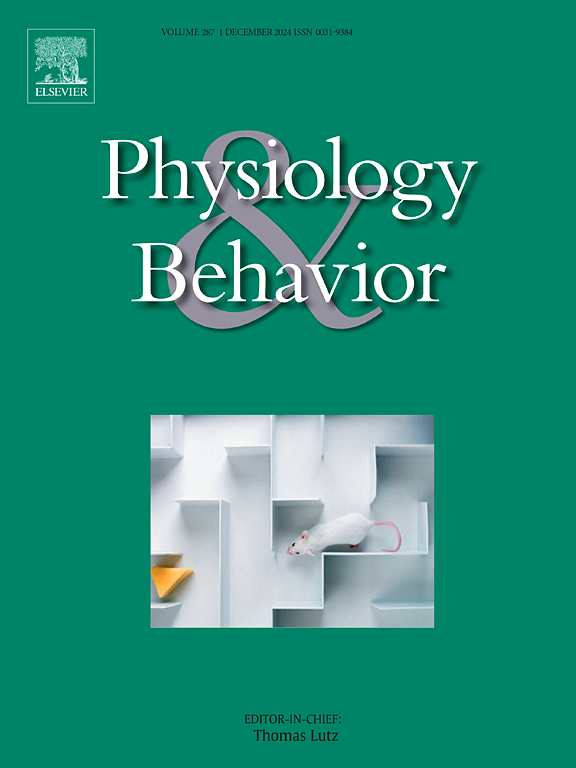Increased sucrose pellet consumption in mice with access to a protein-restricted diet, relative to mice with access to a non-restricted control diet, after prolonged (7 weeks) protein restriction
IF 2.5
3区 医学
Q2 BEHAVIORAL SCIENCES
引用次数: 0
Abstract
Nutritional state influences behavior adaptively to maintain energy homeostasis. For example, during fasting elevated orexigenic signals drive hunger and food seeking, whereas once feeding begins, satiety hormones and anorexigenic circuits suppress “excessive” intake. While adaptive mechanisms responsive to total energy balance are relatively well studied, less is known about how animals maintain macronutrient homeostasis. Mice on low-protein diets (typically ≤10 % kcal protein) often increase their overall consumption to obtain required levels of essential amino acids (except in the case of very low protein diets (<2.5 % kcal protein) where a counterintuitive decrease in food consumption related to impaired mTOR signaling in the hypothalamus has been observed) to obtain required levels of essential amino acids, a phenomenon termed the “protein leverage effect”. Metabolic adaptations accompany this hyperphagia namely, enhanced energy expenditure, increased insulin sensitivity, and resistance to weight gain. If given multiple diet options under acute protein restriction, animals show a selective preference for protein-rich foods, and a suppression of preference for carbohydrate-rich foods. This shift in macronutrient preference presumably helps restore protein homeostasis. However, such studies have primarily focused on relatively short phases of dietary protein restriction and therefore may miss behavioral adaptations that only emerge after prolonged protein deficiency. We therefore investigated macronutrient consumption in adult C57BL/6 mice after prolonged dietary protein restriction. Contrary to findings observed under shorter periods of protein restriction, mice subjected to prolonged dietary protein restriction exhibited a generalized increase in consummatory drive, even for carbohydrate rich foods like sucrose. Our results emphasize the need to consider diet duration when assessing the behavioral and metabolic impacts of protein restriction. As restriction persists, mice exhibit more indiscriminate consummatory behavior, possibly reflecting underlying adaptive reconfigurations in metabolic or neural pathways to protect against excessive weight loss.
在长时间(7周)限制蛋白质饮食后,与不限制控制饮食的小鼠相比,限制蛋白质饮食的小鼠蔗糖颗粒消耗量增加。
营养状况会自适应地影响行为以维持能量稳态。例如,在禁食期间,增氧信号升高驱动饥饿和寻找食物,而一旦喂食开始,饱腹激素和厌氧回路抑制“过度”摄入。虽然对总能量平衡的适应性机制研究得相对较好,但对动物如何维持宏量营养素稳态却知之甚少。低蛋白饮食(通常≤10%的卡路里蛋白质)的小鼠经常增加其总摄入量以获得所需的必需氨基酸水平(极低蛋白质饮食的情况除外)(
本文章由计算机程序翻译,如有差异,请以英文原文为准。
求助全文
约1分钟内获得全文
求助全文
来源期刊

Physiology & Behavior
医学-行为科学
CiteScore
5.70
自引率
3.40%
发文量
274
审稿时长
47 days
期刊介绍:
Physiology & Behavior is aimed at the causal physiological mechanisms of behavior and its modulation by environmental factors. The journal invites original reports in the broad area of behavioral and cognitive neuroscience, in which at least one variable is physiological and the primary emphasis and theoretical context are behavioral. The range of subjects includes behavioral neuroendocrinology, psychoneuroimmunology, learning and memory, ingestion, social behavior, and studies related to the mechanisms of psychopathology. Contemporary reviews and theoretical articles are welcomed and the Editors invite such proposals from interested authors.
 求助内容:
求助内容: 应助结果提醒方式:
应助结果提醒方式:


